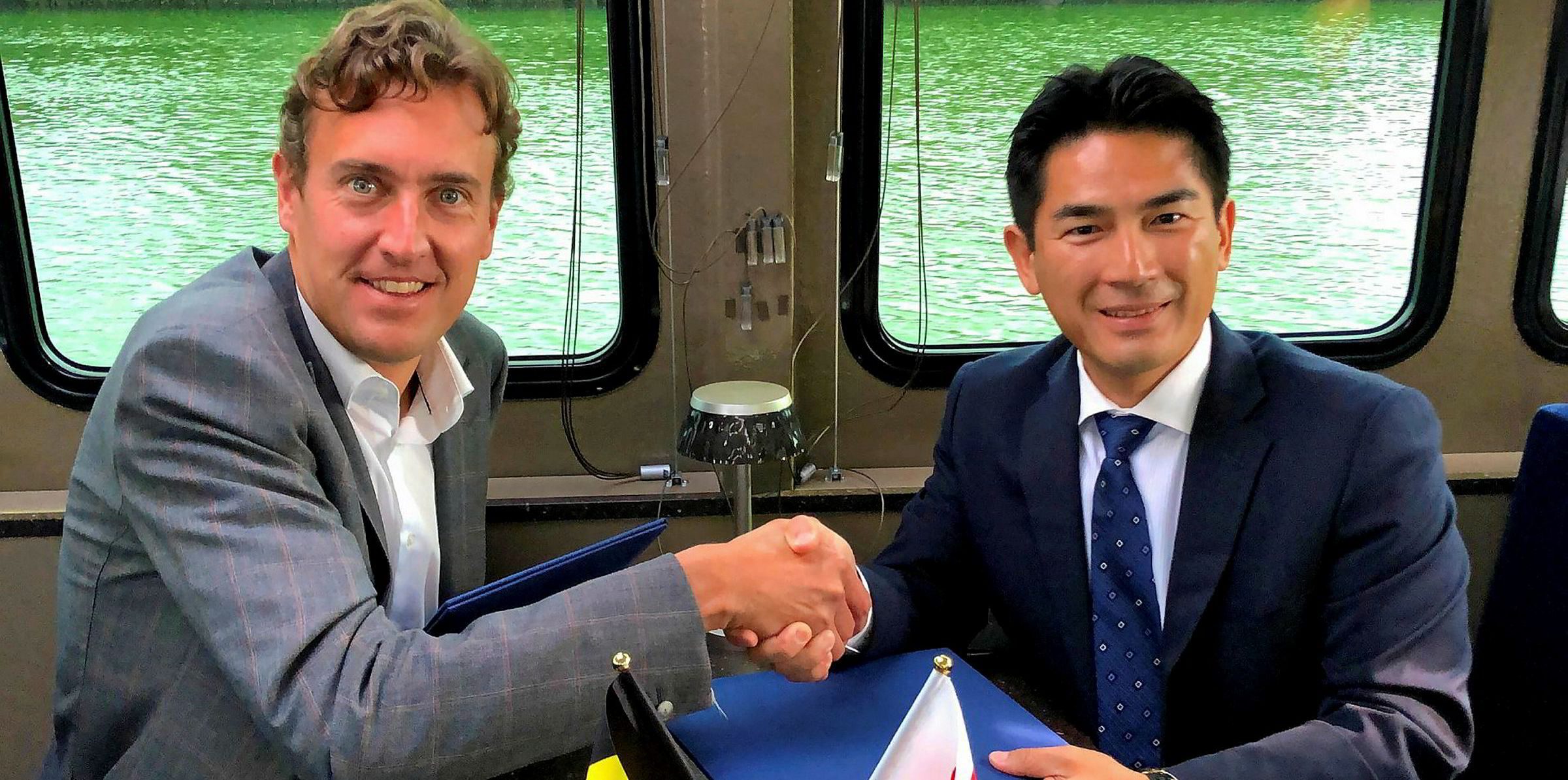Shipowners will need to profit from going green if the IMO’s long-term decarbonisation target is to be reached, according to Alexander Saverys.
To fight global warming, the United Nations body has aimed to reduce greenhouse gas emissions from international shipping by 50% from 2008 levels before the middle of this century.
Whether such an ambitious goal can be reached depends on the commercial viability of low-carbon shipping, Saverys said.
“It’s a very simple game. There are a lot of intelligent people and good companies around [in shipping]. But we are not charity,” the fourth-generation Belgian shipowner said.
“At the end of the day, we will need to pay our people and some need to pay dividends.
Challenges
“I am very confident [for shipping’s decarbonisation] if people can make money in being green. I am not so confident if people cannot.”
For large-scale decarbonisation to occur, some industry players have suggested that vessel charterers should shoulder much of the initial investment costs in low-carbon shipping.
While suggesting some charterers indeed are willing to coordinate with shipowners in finding low-carbon solutions, Saverys stressed that eventually everyone would need to face one question: “Who pays?”
“I am sure some of our charterers would like to pay a little bit more, but not too much.
“Otherwise, they cannot compete with their competitors.”
Footing the bill
During this year’s Global Maritime Forum, an informal working group of 30 high-profile industry figures suggested a carbon tax scheme targeting fossil-based marine fuels that could raise between $8bn and $70bn a year.
Overseen by an IMO-backed body, the proposed Maritime Green Fund would invest in low-carbon fuel, technology and infrastructure while mitigating potentially higher freight costs in the process of decarbonisation for developing nations.

Check out TradeWinds Knowledge http://bit.ly/35g4KZ1, our new research project on IMO 2020 and decarbonisation
While open to the idea of routing tax revenues to investments in decarbonisation, Saverys pointed out long-term subsidies would not be ideal for the development of low-carbon shipping.
“I believe in free business. Businesses find solutions when there is money to be made,” Saverys said.
“Subsidies are nice sometimes to kick-start [low-carbon shipping] projects. But…if a project cannot work without subsidies, it’s not a good project.
“I believe a lot of shipowners would agree with me on that.”
Focus on hydrogen
As CMB’s chief executive, Saverys oversees through its subsidiaries 55 bulkers through Bocimar, 28 boxships at Delphis and seven chemical tankers through Bochem.
Its most known investments in decarbonisation are in the people-carrying sector for shortsea shipping, though.
Having launched the hydrogen-powered, 16-passenger Hydroville in 2017, CMB is planning to order another two vessels that can run on the alternative fuel for delivery next year: one craft and one crew transfer vessel.
“Since the first step we took, we have actually been pleasantly surprised about the results it has given. And that’s why we continue to invest in the technology,” Saverys said.
“The engine performance is ok, the technical performance is ok and the environmental performance is good.”
“We hope that by building those pilot projects, we would be able to develop larger seagoing vessels with hydrogen engines one day.”
However, hydrogen is prone to leak as it is comprised of the smallest molecules. Saverys conceded that storage remains a major obstacle for using hydrogen as a marine fuel.
“Today, if you store [hydrogen] in big compressed bottles, you need to refuel everyday. Going forward ... we will need to work on liquid hydrogen,” Saverys said.
Moreover, when produced from natural gas reforming, hydrogen’s well-to-propeller CO2 emissions are actually higher than oil-based marine fuels. It needs to be produced from water through renewable energy-powered electrolysis to have a nearly zero carbon footprint in its life cycle.
To limit the environmental impact, ports should develop a hydrogen bunkering infrastructure with excess renewable power, according Saverys.
“Hydrogen is only a green fuel if it is produced through renewable energy,” Saverys said.
“Going forward, as we develop more and more applications, we hope the ports will start to invest as well.







